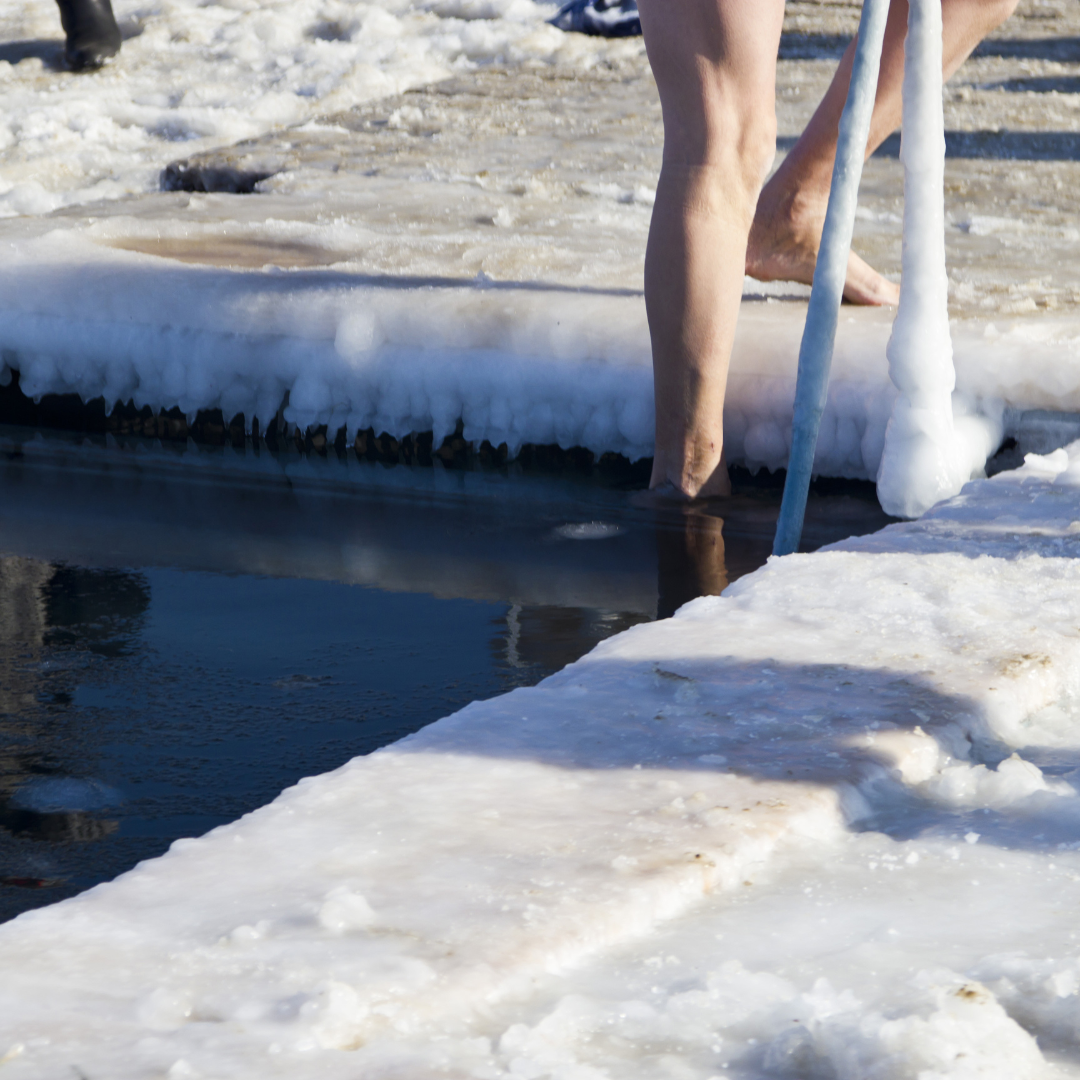Ice baths have skyrocketed in popularity recently, with people like Wim Hof advocating for their many many benefits and people discovering more and more through scientific studies that they may indeed have both the physical and mental perks that some claim them to. Ice baths are being utilised by athletes, fitness enthusiasts, and even medical professionals to enhance their lifestyle or to better recover from their physical activities.
In this article we’ll take you through a brief overview of ice baths and their benefits, the importance of understanding the appropriate length of time to stay in an ice bath, what the optimal times are to spend in an ice bath, and the actual work done behind the scenes to validate those claims.
What’s an ice bath?
The basic idea behind an ice bath is to submerge the body in ice-cold water for a period of time. The cold water has been shown to decrease inflammation, help with muscle soreness and fatigue, and improve recovery time after intense exercise. Outside of the physical benefits, they have also been shown to help with sleep, boost immune function, and improve mental health.
Why should you care about how long you stay in the cold water?
While cold water immersion is a very powerful tool for wellbeing, it's important to understand the risks involved and one of those is the length in which you stay in an ice bath. We’ll dive into this more later but there can be negative side effects to staying in an ice bath too long, often defined by things like age, fitness level, injury status, and your personal goals.
How do ice baths work?
Ice baths work on the concept of cold-induced vasoconstriction, meaning that the blood vessels shrink, limiting the amount of blood flow circulated throughout the body. This can help reduce muscle soreness, improve recovery time and give relief to certain aches and pains. At the same time, the cold water triggers the release of hormones such as adrenaline and noradrenaline, which can help improve circulation and oxygen delivery to the muscles.
Top 5 benefits of ice baths
Reducing inflammation
One of the main benefits of ice baths is their ability to reduce inflammation. The body naturally responds to tissue damage or injury with inflammation, but excessive amounts of it can lead to discomfort, swelling, pain, and decreased mobility. When you get into an ice bath blood flow is reduced, limiting the inflammatory response, and this can help speed up recovery and post-workout soreness.
Enhancing recovery
In the same vein, ice baths are a fantastic tool for enhancing recovery after intense exercise. The cold water can help to reduce muscle soreness and fatigue, allowing you to recover faster and get back to training sooner. Another important point is that ice baths may help to reduce the risk of injury by improving range of motion and decreasing the risk of muscle strains. We take an in depth look into ice baths for recovery here.
Increasing endurance
Some studies have suggested that cold water immersion can help increase endurance by improving blood flow and oxygen delivery to the muscles. This may be due in part to the release of hormones such as adrenaline and noradrenaline, which can increase heart rate and blood pressure.
Boosting immunity
Cold water immersion has also been shown to have immune-boosting effects. One study found that regular cold water exposure can increase levels of white blood cells, which help fight off infection and disease.
Improving mental health
Finally, ice baths may also have mental health benefits. The cold water can help reduce stress and anxiety, and may even improve mood by triggering the release of endorphins, which are natural painkillers and mood boosters.
Potential risks
It should be said that despite the fact that ice baths can be very beneficial, they also carry potential risks and side effects that you should be aware of. Prolonged exposure to the cold can lead to life threatening conditions such as hypothermia, which is when the body is unable to raise its core temperature faster than it drops.
It’s important to consult a medical professional before making ice baths a part of your routine especially if you have any kind of medical condition, and also incredibly important to always listen to your body. Don’t push yourself too hard, and potentially even have a spotter to assist you before you start to test your limits.
How long should you stay in an ice bath?
There are a number of factors that inform the recommended amount of time one should stay in an ice bath. One of the biggest definers is temperature; the lower the temperature the less time you should stay in the ice bath to avoid injury.
Generally recommended optimal times
Most experts will recommend spending 10-15 minutes in an ice bath when the temperature is in the range of 10-15°C (50-59°F).
Once you get outside this temperature range, the recommendations change. For example if the temperature goes below 10°C, you should limit your exposure time to approximately 5-10 minutes. Conversely, if the temperature is above 15°C then you can probably stay in the ice bath for up to 20 minutes.
The caveat that should always be surfaced is that you should always listen to your body and its reaction to the water. If you feel like you’re pushing too much, do not hesitate to get out. Individual tolerance to water will differ greatly, and therefore time spent in the water is really up to your body.

Factors to consider
As we’re talking about individual tolerance and body differences, some other factors that play into how long you should stay in an ice bath are:
- Age: as people get older, their skin becomes thinner and less elastic, which can make them more sensitive to cold temperatures. One study found that older adults had a decreased tolerance to cold water immersion and were less able to maintain a comfortable body temperature during an ice bath. Therefore, older adults may need to spend less time in an ice bath than younger individuals to avoid discomfort or injury.
- Fitness level: those with a higher level of physical fitness may be able to tolerate longer ice baths than those who are less fit. This is because individuals who are in better shape may have a higher pain tolerance and better circulation, which can help them withstand the colder temperatures. This study backs up the claim, and found that highly trained athletes were able to tolerate longer cold water immersion than recreationally active people.
- Injury status: ice baths are often used to reduce inflammation and promote healing for injuries, but prolonged exposure to cold temperatures can actually worsen inflammation in some cases. This study found that ice baths have a limited role in acute injury management due to the potential risk of making their condition worse by exacerbating inflammation and therefore delaying recovery. People with certain injuries should consider the option of an ice bath to aid in recovery, but it is likely that benefits will only come from a short duration exposure.
- Purpose and goals: the intended purpose of an ice bath can also impact the duration of the treatment. For example, a post-workout recovery ice bath may require a shorter duration than an ice bath intended for the treatment of an injury. The duration may also vary depending on the severity of the injury or the extent of muscle damage. It's important to consult with a healthcare professional to determine the appropriate duration of your treatment especially when dealing with an injury. If you’re using ice baths for wellness and mental health, then the duration will be more down to what feels good to you.
The Huberman Protocol
Andrew Huberman is a neuroscientist and a professor at Stanford University, who has talked about and is an advocate for cold water immersion on his podcast.
The conclusion of his research and what he recommends is that you spend a total of 11 minutes per week in an ice bath. This doesn’t have to be in a single session and actually is probably more practical done over a few sessions, as long as the total time spent is around 11 minutes.
The rule of thumb with regards to temperature is that you want to feel the sensation of: this is REALLY cold and I want to get out, BUT I can safely stay in.
Conclusion
In summary, the appropriate length of time to stay in an ice bath varies based on several factors, such as age, fitness level, injury status, and the purpose of the treatment. There are generally recommended time frames for cold water exposure especially within the matching recommended temperature range.
It's important to understand that everyone reacts differently to the cold and consulting with a healthcare professional or a qualified trainer before attempting ice baths is always a good plan to ensure safety and effectiveness of the practice.
We would recommend considering the Huberman Protocol of 11 minutes total per week as a good goal to aim for, either in one burst or in shorter sessions. However there is no risk of doing more than this as long as your body responds in a positive way.





Leave a comment
This site is protected by hCaptcha and the hCaptcha Privacy Policy and Terms of Service apply.